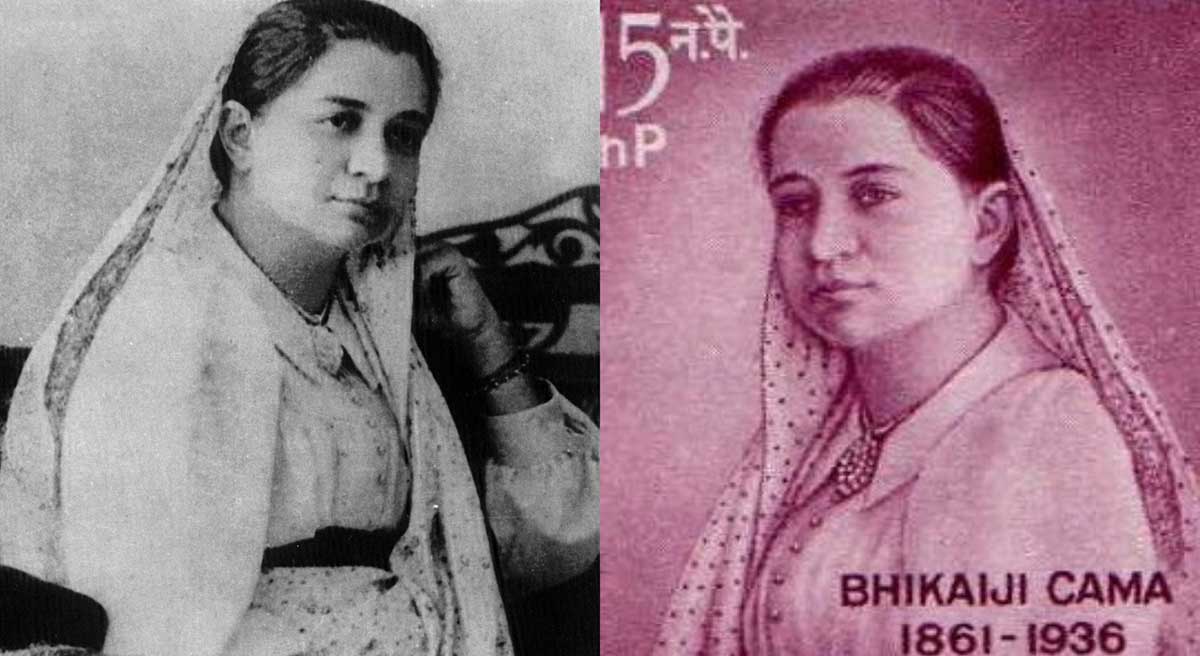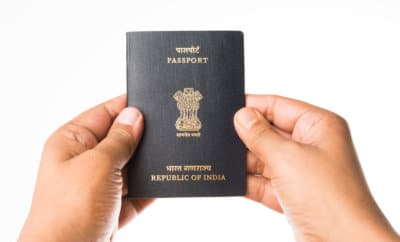NRI
The First Indian to Hoist an Indian Flag Abroad

The lesser-known story of a fiery Indian woman freedom fighter who spread the Indian nationalist agenda in foreign land.
On 22 August 1907, four decades before India gained its independence, a Parsi woman stood tall at the International Socialist Conference held in Stuttgart, Germany and unfurled the first Indian flag outside the Indian Subcontinent in front of about a thousand representatives from around the world. This woman was Bhikaiji Rustom Cama.
As she hoisted the flag, her words echoed in the room, “This flag is of Indian Independence! Behold, it is born! It has been made sacred by the blood of young Indians who sacrificed their lives.” As the representatives stood up to salute the flag, it was indeed a powerful moment for India.
Stood Up and Stood Tall
A freedom fighter and an advocate of women’s rights, Bhikaiji Cama born in an affluent Parsi family in Mumbai was well-educated and a keen learner. A nationalist at heart, Bhikaiji believed that the Britishers were exploiting India for their own profit. Her marriage to a pro-British lawyer ended with Cama walking out it and engaging in social work and got involved in uplifting the weaker sections of the society.
In 1896, Mumbai was hit by the famine and then the bubonic plague broke out in the Bombay Presidency. Bhikaiji who came to be known as Madam Cama, volunteered to help and save the victims. But during this she herself caught plague which left her weak and she was sent to Britain for recovery. UK ended up becoming her home for the rest of her life.
Nationalism in Britain
It was there she met Shyamji Krishna Varma, who was known for his nationalist speeches at Hyde Park. Through him, other Indian nationalists such as Lala Har Dayal, Singh Rewabhai Rana and Dadabhai Naoroji, who was the president of the British Committee of the Indian National Congress. She went on to become Naoroji’s private secretary. She addressed quite a few meetings at Hyde Park.
In 1905, as her nationalist activities increased in London, she was told by the British that her return to India would be prohibited if she didn’t sign a statement promising to not participate in nationalist activities. She refused and remained in exile.
She shifted to Paris where she co-founded the Paris Indian Society along with S. R. Rana and Munchershah Burjorji Godrej. Cama and other Indian nationalists living in exile wrote, published and distributed revolutionary literature for the Indian independence movement, including Bande Mataram an Indian nationalist publication from Paris founded in response to the British ban on Bankim Chatterjee’s nationalist poem Vande mataram. These were published weekly and also smuggled into India through the French colony of Pondicherry.
 The flag that Bhikaiji Cama hoisted in Germany.
The flag that Bhikaiji Cama hoisted in Germany.
Photo Credit: Wikimedia Commons
Unfurling the First Indian Flag Overseas
In August 1907, Cama raised the ‘Flag of Indian Independence’ in Germany asking equality and for autonomy from Britain.
The flag was co-designed by Cama and Shyamji Krishna Varma. The flag had three stripes, green, yellow and red representing Islam, Hinduism and Buddhism respectively. The green had eight blooming lotuses representing pre-independence India’s eight provinces. In the middle saffron stripe, ‘Bande Mataram’ was written across. The red stripe at the bottom displayed a half moon on the right and the rising sun on the left, indicating Hindu and Muslim faith.
The original flag by Cama is now on display at the Maratha and Kesari Library in Pune.
Fight for Women’s Rights
Along with her fight for Indian independence, Madam Cama stood for the cause of women. Attending the National Conference at Cairo, Egypt in 1910, Cama asked, “Where is the other half of Egypt? I see only men who represent half the country! Where are the mothers? Where are the sisters? You must not forget that the hands that rock cradles also build persons.”
Cama remained in exile in Europe until 1935. Paralysed by a stroke and nearing her death, she petitioned the British government to be allowed to return home. She was granted permission as she wasn’t in the condition to take part in the independence movement. She returned to India after 33 years.
But she didn’t live long enough to witness India attaining freedom. She breathed her last on August 13, 1936.
Editor’s Note: The story has been edited to correct spelling of Bhikaiji Rustom Cama’s first name. It should be Bhikaiji, not Bhikaji.




1 Comment
You must be logged in to post a comment Login